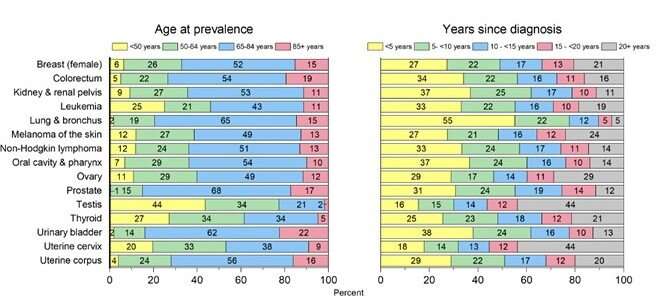
A new report led by researchers at the American Cancer Society (ACS) in collaboration with the National Cancer Institute (NCI) shows more than 18 million Americans (8.3 million males and 9.7 million females) with a history of cancer were living in the United States as of January 1, 2022, with a little over 12 million (67%) aged 65 years or older. The study also found substantial racial disparities in treatment and survival for common cancers. The findings were published today as an article in CA: A Cancer Journal for Clinicians and a companion consumer version, Cancer Treatment & Survivorship Facts & Figures 2022-2024.
To assist the public health community in better serving cancer survivors, the ACS and the NCI collaborate every three years to estimate cancer prevalence in the U.S. The most prevalent cancers are prostate (3,523,230), melanoma of the skin (760,640), and colorectal (726, cheap xenical online us 450) among men and breast (4,055,770), uterine corpus (891,560), and thyroid (823,800) among women. More than one-half (53%) of survivors were diagnosed within the past 10 years.
As the population of cancer survivors continues to grow and age, there is an increased need for guidance for health professionals, caregivers, and patients on how to manage late and long-term effects of cancer and its treatment, maintain healthy behaviors and limit financial toxicity,” said Kimberly Miller, scientist, surveillance and health equity science at the ACS and lead author of the study. “In addition, the survivor population is increasingly diverse, and further resources are needed to ensure equitable access to survivorship care.”
According to the report, contemporary treatment patterns based on information from the National Cancer Database show evidence of increased uptake of recent treatment advances. For example, receipt of immunotherapy for stage IV non-small cell lung cancer increased from 12% in 2016 to 33% in 2018.
However, there are substantial racial disparities in treatment. For example, receipt of surgery is substantially lower among Black patients than White patients with non-small cell lung cancer, 49% versus 55% for stages I-II and 16% versus 22% for stage III. One of the largest racial disparities occurs in the treatment of rectal cancer, for which only 41% of Black patients with stage I disease receive proctectomy or proctocolectomy compared to 66% of White patients. Treatment disparities are exacerbated by later stage diagnosis in Black people than in White people for most cancers, with one of the largest disparities for uterine corpus cancer (59% vs 73% diagnosed with stage I disease, respectively).
“We are encouraged by a growing number of tools to assist patients, caregivers, and clinicians in navigating the various phases of cancer survivorship,” said Miller. For example, the ACS has developed guidelines for posttreatment care and nutrition and physical activity among survivors. “However, more evidence-based strategies and equitable access to available resources are needed to mitigate disparities for communities of color.”
Source: Read Full Article
